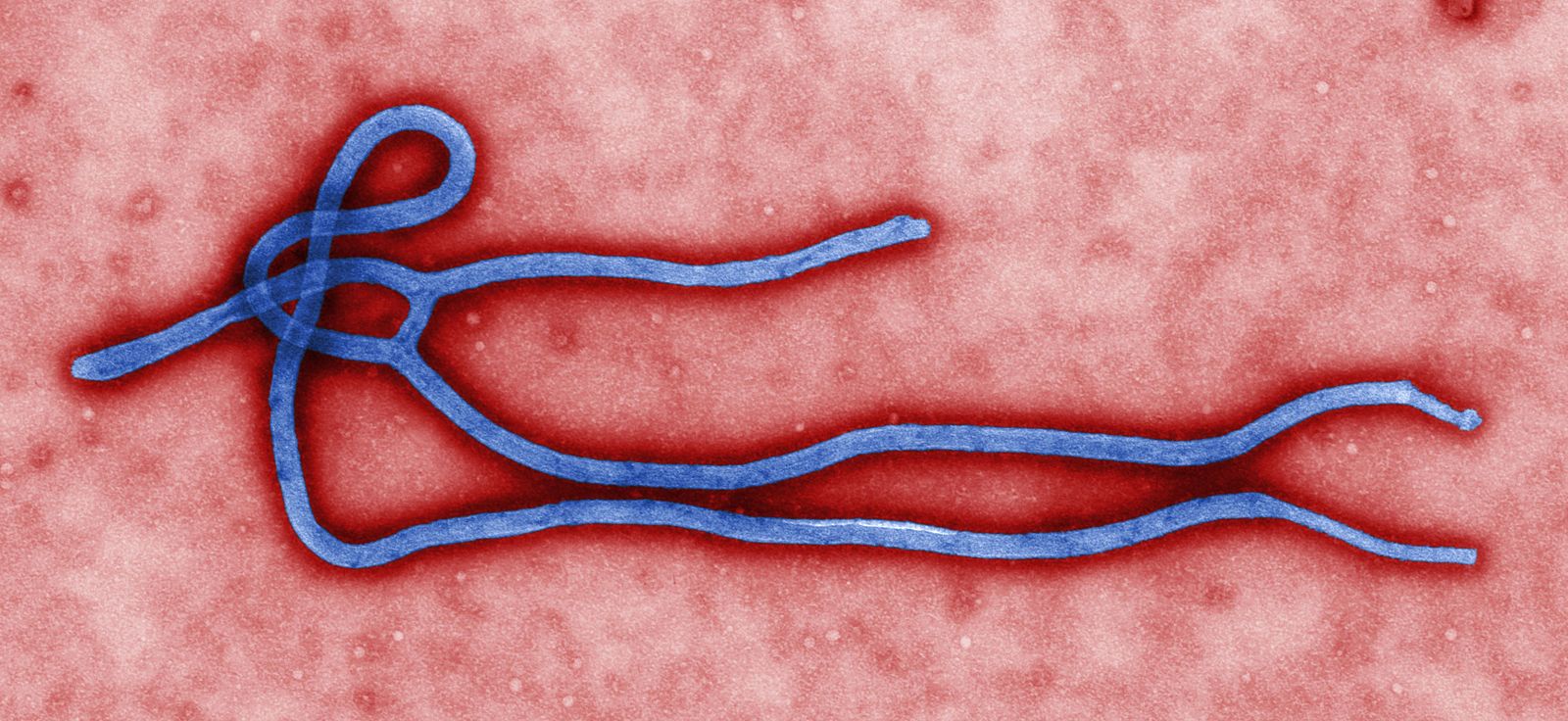Difference Between Coronavirus and Ebola
Coronavirus is a type of betacoronavirus causing a respiratory illness. Ebola is a type of filovirus causing a hemorrhagic fever.

What is Coronavirus?
Definition:
Coronavirus causes a respiratory illness and is one of a group of viruses called betacoronaviruses.
Symptoms and complications:
Typical symptoms of coronavirus are shortness of breath, a cough and fever, and lung problems (often a type of pneumonia develops). About 2% of infected people die and most often those people are individuals who already have another illness or are immune-compromised.
Diagnosis:
The way to diagnose the 2019 coronavirus is by a real-time RT-PCR test, which can detect the presence of viral material.
Transmission:
The novel coronavirus is a suspected zoonosis that likely entered the human population from some animal host that has not been identified as of now. The virus is very contagious and spread among people when they cough or sneeze.
Risk factors:
People most at risk of catching the coronavirus include those in areas where the infection is very prevalent and also doctors and nurses working with infected individuals.
Treatment and prevention:
There is no cure for the illness and patients are treated for their symptoms. In very severe cases patients may need to be given extra oxygen or put on a ventilator. Prevention of infection is largely through avoiding contact with infected individuals and not visiting areas where there is an outbreak of the virus.

What is Ebola?
Definition:
Ebola is a hemorrhagic viral illness caused by a type of filovirus. The incubation varies from two days to 20 days.
Symptoms and complications:
The symptoms of Ebola are muscle pains, fever, headache, pain in the abdomen, nausea, diarrhea, and vomiting; there is also bleeding from multiple parts of the body. Jaundice often develops and patients may enter a delirious state and coma and all the organs may fail. The illness has a high fatality rate if the person is not treated in time.
Diagnosis:
The CDC developed an ELISA and RT-PCR test that can detect and provide a definitive diagnosis of Ebola based on the presence of viral antigens and genetic material, respectively.
Transmission:
Ebola is believed to be a zoonotic illness in which the virus was transmitted from a host animal into humans. The virus is transmitted easily from one person to another by way of body fluids.
Risk factors:
People who eat bush meat and who eat bats seem to be at higher risk of contracting the illness. Healthcare workers and others in close contact with patients sick with Ebola are also at a much greater risk of infection.
Treatment and prevention:
There is no cure for Ebola although there are vaccines that are being developed; some of which are being tested along with certain antivirals. The treatment is primarily supportive in nature with the replacement of fluids and giving of platelets when needed. The death rate can be 70% or even higher where there is no treatment available.
Difference between Coronavirus and Ebola?
Definition
Coronavirus is a viral disease caused by a betacoronavirus named 2019-nCoV virus. Ebola is a viral disease caused by a type of filovirus.
Country where discovered
The coronavirus was first discovered in China. Ebola was first discovered in the Democratic Republic of Congo.
Incubation period
The coronavirus takes about from two days to up to about two weeks before symptoms appear. Ebola virus incubation is also quite variable and is from two days to as much as 20 days.
Diagnosis
Coronavirus is definitively diagnosed by means of a molecular test known as rRT-PCR. Ebola is definitively diagnosed by an ELISA test and an RT-PCR test that the CDC developed.
Symptoms
The symptoms seen with coronavirus include the presence of a cough, shortness of breath, pneumonia, and fever. The symptoms of Ebola are fever, headache, abdomen pain, nausea, vomiting, jaundice, bleeding, and sometimes the person goes into a coma.
Transmission
The transmission of coronavirus is by way of secretions from the respiratory tract which are sneezed or coughed out of the body. The transmission of Ebola is by contact with any type of body fluid from an infected person.
Treatment
Some people with coronavirus need to be hospitalized and given oxygen, and a few antivirals have shown some promise in treating the illness. Ebola treatment relies on fluid therapy, giving people platelets and pain killers; vaccines and antivirals are being tested.
Mortality
Coronavirus has a current estimated 2% mortality rate. Ebola has a mortality rate that can be at or above 70% when untreated.
Table comparing Coronavirus and Ebola

Summary of Coronavirus Vs. Ebola
- Coronavirus and Ebola are both very contagious illnesses caused by a virus.
- Coronavirus causes problems with the respiratory system, specifically with the lungs.
- Ebola causes bleeding and problems throughout the body.
- Ebola is caused by a filovirus while coronavirus is caused by a betacoronavirus.
- There is no cure for coronavirus or Ebola.
- Difference Between Rumination and Regurgitation - June 13, 2024
- Difference Between Pyelectasis and Hydronephrosis - June 4, 2024
- Difference Between Cellulitis and Erysipelas - June 1, 2024
Search DifferenceBetween.net :
Leave a Response
References :
[0]Image credit: https://en.wikipedia.org/wiki/File:Ebola_virus_virion.jpg
[1]Image credit: https://pixabay.com/de/illustrations/corona-coronavirus-virus-pandemie-4893215/
[2]Akpan, Nsikan. “new-coronavirus-spreading-between-humans-how-it-started”. National Geographic, 2020, https://www.nationalgeographic.com/science/2020/01/new-coronavirus-spreading-between-humans-how-it-started/
[3]Center for Disease Control and Prevention. “2019 Novel Coronavirus”. CDC, 2020, https://www.cdc.gov/coronavirus/2019-ncov/about/symptoms.html
[4]Yuill, Thomas M. “Marburg and Ebola virus infections”. Merck Manual, 2018, https://www.msdmanuals.com/professional/infectious-diseases/arboviruses,-arenaviridae,-and-filoviridae/marburg-and-ebola-virus-infections
